The Importance of EDI SLAs for Your Supply Chain
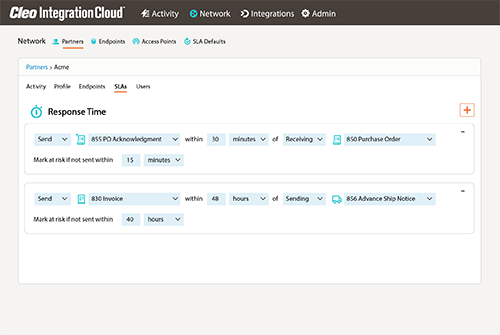
In the modern business ecosystem, digital relationships matter. And it's important to know how each of your partners is doing because underperformance or failure to meet expectations can be costly.
Service Level Agreements, or SLAs, are one way that parties to a business relationship track and measure that relationship's performance.
And in the digital realm, the lion's share of those SLAs are predicated on a technology called EDI, a technology standard that's been in use worldwide in supply chains for several generations now.
In this blog, we'll look at EDI SLAs and show all the ways how improving their creation, definition, control, and management can benefit your supply chain and your overall business not just in terms of strengthened trading partner relationships, but in concrete terms of improved revenue and enhanced profit margins.
First though, what is EDI?
EDI stands for Electronic Data Interchange.
By way of definition, "EDI is a method for electronically exchanging standardized business information between trading partners."
Think of EDI as a common electronic business language that allows trading partners to quickly and easily communicate with each other.
But how does EDI work?
Businesses that communicate electronically are called EDI trading partners. And to conduct business, those partners need the ability to exchange key documents. In a traditional purchase order document exchange, for example, the entire cycle could take anywhere from days to weeks.
Below you can see an example of a manual process showing the traditional document exchange for a purchase order.
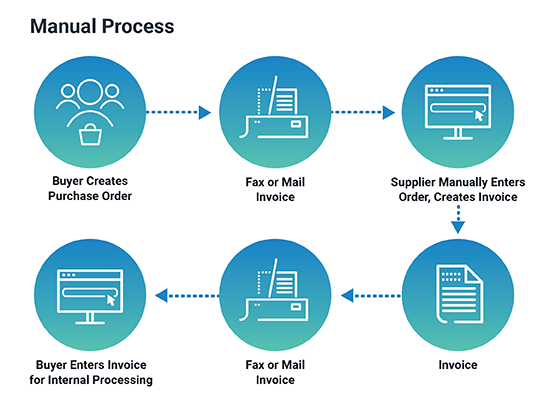
Here's what's happening:
- The buyer creates a purchase order
- The buyer prints the purchase order and then sends it to the supplier via mail, fax, or email
- The supplier receives the purchase order and manually enters it into its own order management system (Netsuite, Salesforce, Quickbooks, SAP, etc.)
- The supplier creates an invoice
- The supplier prints the invoice and then sends it to the buyer via mail, fax, or email.
- The buyer receives the invoice and manually enters the invoice contents into its own back-end systems
Oftentimes, there are far more cumbersome manual steps than the ones outlined in the above diagram, including acknowledging the purchase order reception or requesting changes to an invoice.
But the key thing is these steps are too often handled manually, which is costly and takes too long.
That's where EDI comes in.
With the EDI order process, a company can enable the computer-to-computer exchange of business documents from one company to another, thereby enabling automated, paperless, digital communication. Much faster, less costly, and with much less room margin for human error.
OK, so what is an SLA?
SLAs are essentially written contracts that codify the mutual expectations in a business partner relationship.
They define the metrics by which service is measured and spell out penalties for under-performance.
Generally speaking, the reason a Service Level Agreement or SLA is important is because of what's in it essentially the agreed-upon terms that set the parameters of a relationship. SLAs are unique to every relationship and can be quite different from one industry to another.
In manufacturing, for instance, an SLA defines the level of service expected by a customer from its supplier. In cloud software, an SLA expresses the legal relationship between a company and a software vendor.
In logistics & transportation, it is an agreement between a logistics service supplier and their client.
It's important to realize too that SLA documents are also "living" documents that call for regular tracking and compliance, so it is important to know how to monitor Service Level Agreements and have the right tools to live up to them.
Regardless of industry, a common SLA will consist of:
- Objectives, Services, responsibilities
- Measurement Agreed-upon metrics for accuracy
- Response times
- Obligations
- Penalties
The other commonality is that SLAs need to be actively managed.
OK, putting these two concepts together...
What is an EDI SLA?
Basically, it's a policy or agreement between two parties that stipulates and governs how EDI is to be utilized in the course of the business relationship. It sets out the expectations for routine compliance and outlines costs associated with failure to meet specific key performance indicators or KPIs.
Why are EDI SLAs important?
Throughout your digital ecosystem, from customers to trading partners, companies must handle the many EDI transactions that move throughout their environment.
Onboarding a new trading partner also means there needs to be a clear understanding of the expectations that an enterprise needs to meet or risk penalties.
Companies that are unable to keep up with demand and fail to complete accurate transactions are also going to be faced with violating their SLAs a costly proposition.
Failure to meet SLAs will have a negative impact on an organization in multiple ways.
For starters, it's going to cost them customers and trading partners who will simply go to a competitor who is able to keep up their end of the deal. Secondly, a company's reputation will surely take a hit when word gets around that they cannot meet customer and trading partner expectations.
The reality is that companies who insist on relying upon their outdated and legacy systems are the ones who will risk violating SLAs.
Those companies who have modernized their EDI solutions are going to rest easy knowing their SLAs will be met and they can continue to scale and maintain business continuity.
When companies for one reason or another fail to upgrade their EDI solutions, they are much more likely to be unable to hit SLAs or meet deadlines for implementing new trading partner requirements, including ASN updates.
The impact of these violations makes for a high cost simply to conduct business. Being known as the vendor who consistently fails to fulfill its obligations is going to quickly and negatively affect its reputation.
And let's face it, the last reason a company wants to lose a customer is because of its own doing.
A modernized EDI solution offers plenty of benefits, but perhaps the most important is that it is a much more reliable way to conduct business with a digital ecosystem.
Chargebacks occur when a company is unable to meet an SLA, and there are a variety of reasons to cause them.
Here's an example we put together to show how chargebacks might be determined by Amazon for non-compliant EDI:
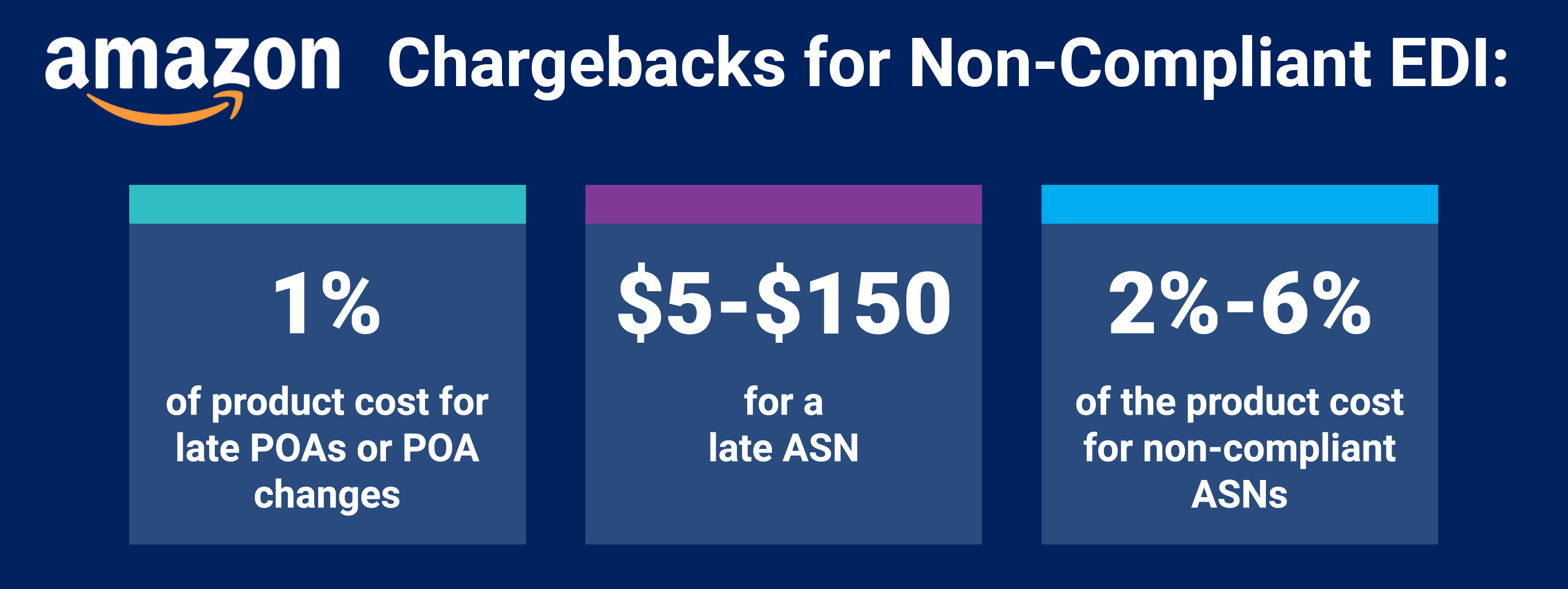
It's similar to other companies, for example, doing EDI with Walmart.
With Walmart, the EDI trading partner MUST send EDI 997 functional acknowledgments no more than 24 hours from when Walmart purchase orders were placed in their partner mailbox.
Of course, it's not just retailers that expect EDI SLAs as common practice.
In today's far-flung digital ecosystems, they're expected in manufacturing, logistics, and wholesale distribution, as well as retail settings.
This is why effectively managing EDI SLAs is so vitally important to your overall supply chain management.
The Importance of the EDI SLA to Supply Chain Management
In a nutshell, SLA management is the ongoing process of ensuring all provided services and processes, those stipulated in the underlying contracts, are in alignment.
Therefore, the goal of EDI supply chain management is for your company is meeting EDI SLAs with all your EDI-dependent trading partners.
It's simple to understand why this makes sound business sense: Good EDI supply chain management means you are consistently meeting those SLAs, and relationships thrive prosper.
But bad EDI supply chain management can mean the opposite chargebacks and unhappy business partners.
Recent research shows that non-compliance is costing companies more than it used to.
So it's important to become EDI compliant and eliminate chargebacks.
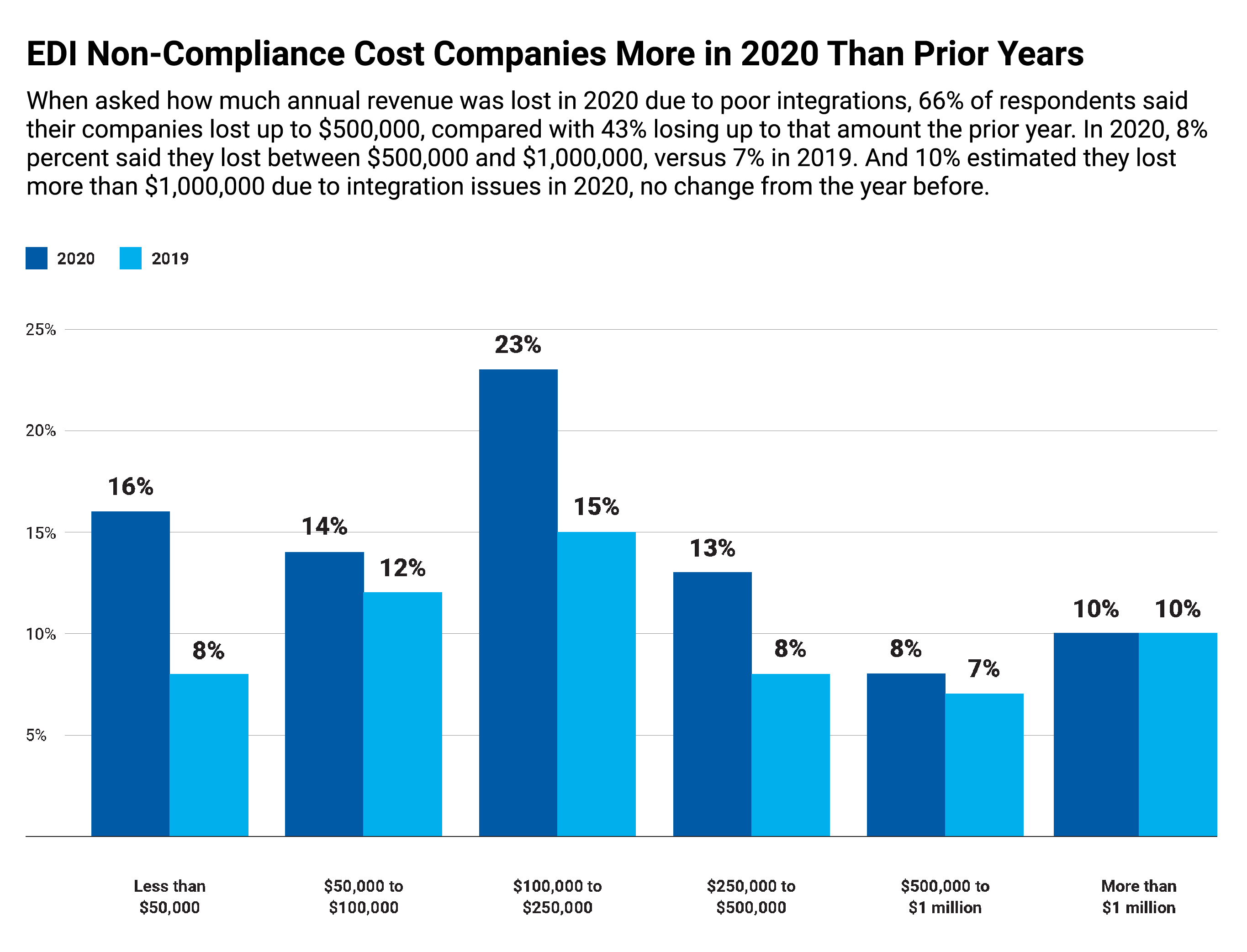
Meet every EDI SLA for your supply chain partners
Meeting your EDI SLAs is among the most important parts of your trading partner relationships.
These days, good EDI supply chain management is done using an EDI platform complete with SLA monitoring and configurable alert notifications.
Such platforms shield users from the complexity involved in EDI SLAs, from the starting point of defining and configuring the SLA in just a few minutes all the way through to day-to-day management.
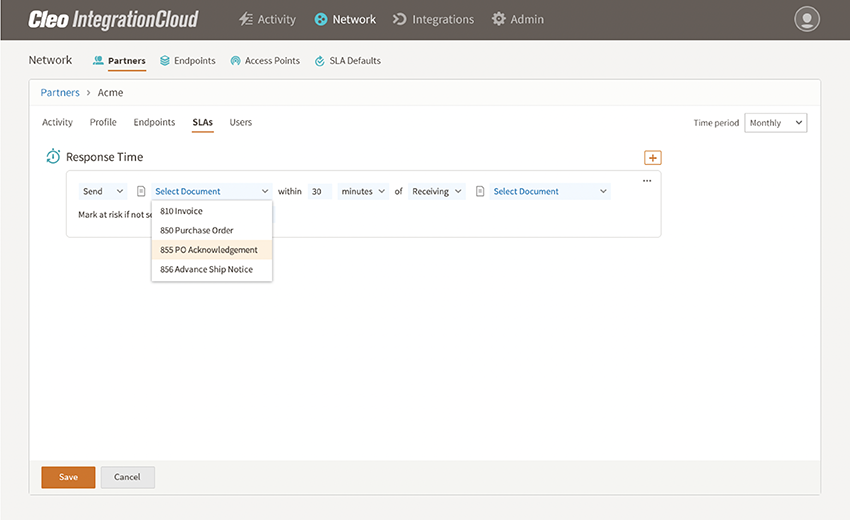
Having better supply chain agility and control, plus getting potentially cost-saving alerts that help you identify and act on at-risk SLAs before they are missed, can often offset the annual cost of such a platform multiple folds.
EDI supply chain management plays a critical role in helping organizations achieve this degree of agility and efficiency in managing SLAs.

About Cleo
